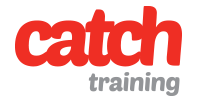Essential Items Your First Aid Kit Should Contain
A well-stocked first-aid kit is a must-have in every household or workspace. You never know what might happen! The importance of learning basic first aid techniques and owning a handy first aid kit is paramount. Here are ten essential items that your first aid kit must contain!
Antiseptic Wash
In case you are at home, it is a good idea to wash your wound with soap and water thoroughly. In case you are involved in a roadside emergency or somewhere where a running faucet is not available immediately, it is advised that you keep an antiseptic wash that comes out in a stream that is forceful enough to flush dirt particles out of the wound.
Antibiotic Ointment
Either alone or in combination, apply antibiotic ointments directly onto your wounds or on an adhesive bandage or a gauze pad before it is used to cover an injury. These ointments help stop the growth of bacteria and prevent the wound from getting infected.
Adhesive Bandages
Adhesive bandages, or as many refer to them- band-aids, are essential while dealing with scrapes, small cuts, or blisters. They come in various shapes and sizes to be applied according to the scope or type of injury. Make sure to stock up your first aid box with several band-aids of all kinds and not forget the waterproof ones with antibacterial medication.
Sterile gauze pads and Medical Tape
Gauze pads are a must-have for every first aid kit. You can use them to stop bleeding and cover up a wound that an ordinary adhesive bandage will not accommodate. First, generously apply an antibacterial ointment on the damage and then cover it up with the gauze. Finally, secure the gauze in place with the help of medical tape.
Elastic Bandage
In a first aid kit, the length of a stretchy fabric has several uses. It can help reduce the swelling when wrapped tightly around the injury, hold the bandage in place, act as a tourniquet, or even hold the hot or cold pack in place.
Instant Cold Packs
Many injuries benefit from being iced. The cold slows blood flow, which decreases the swelling and bruising that may occur after a sprain or impact. Cold also helps in easing out the itching from a sting or a bite. Since carrying ice everywhere you go is not possible. Hence, a cold pack is the next best thing to help provide relief in an emergency.
Disposable Gloves
Gloves are an essential part of a first aid kit for protecting both the injured person and the one administering first aid, from any bacteria or harmful microbes.
Scissors
This may seem like a trivial tool but can come very handy whenever administering first aid to an injured person. From trimming gauze pads to cutting lengths of medical tape or to snipping away the cloth that needs to be trimmed out of the way to get a better look at the wound, it comes handy in all situations. Make sure to keep a pair of small curved scissors in your first aid kit.
Tweezers
A good pair of tweezers can be a convenient tool for extracting splinters, thorns, ticks, or insect stingers. The tweezers made from surgical steel and have an excellent point are good choices for first aid kits.
Sting and Bite Treatments
Insect bites and stings can be tough to handle when stuck in a situation like that; this is why it is better to carry treatment beforehand to get instant relief.
First aid knowledge is essential for everyone. You must be wondering why everyone must take up a first aid course, but once when you learn the essentials from Catch Training, you’ll never question yourself twice ever again! Precaution is always better than cure, stay safe!

